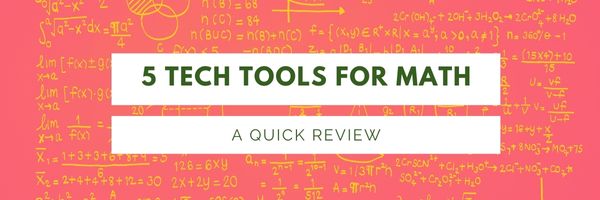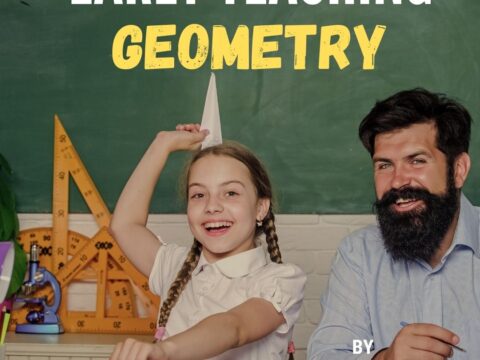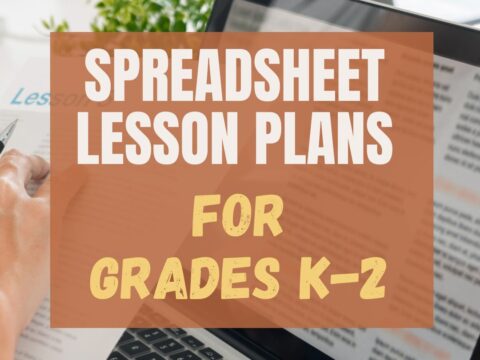Math teachers: Here are great suggestions from efriend and math afficionado, Matt Kim:
Before I was ever a high school math teacher, I was always a hardcore technophile. As long as I can remember, technology has been one of those things that have caught my interest no matter what my current job title was at that time. It makes sense that when Jacqui and I were talking about popular tech tools and ways to bring tech into the k-12 math class, I had a lot to share and get excited about and jumped at the opportunity to write this post. It really is an exciting time for technology in education and the tools available to us to use today in our math classes is no exception. Just a disclaimer though, I am a high school math teacher, so a few of the tech-tools I reference in this post belong mostly in a secondary math classroom, but with a little elbow grease and ingenuity, there are ways to fit them into any K-12 math curriculum as well. For the most part, these are just great ways to incorporate tech in your math classroom so feel free to give them a try!
-
Desmos
If you’re a math teacher and have never heard of Desmos, you’ve been either living under a rock or need to upgrade your math-teacher game pronto. While TI calculators are still ubiquitous and useful especially when working in higher math classes like Trigonometry or Calculus, Desmos is an online graphic calculator that can do everything the $100+ TI calculators can do and more (and did I mention it’s free?). If you are teaching in a 1-to-1 device classroom, the Desmos team has done an exceptional job in bringing math education into the 21st century. Desmos has created an activity builder that teachers can use to build interactive lessons that students can do on their own tablet or Chromebook devices while the teacher monitors student work in real time. What’s more, they have curated the best lessons into a comprehensive library of lessons that are free for teachers to use as well! Check out teacher.desmos.com to create your own activities or use some of the featured lessons already there.
-
Geogebra
Geogebra is very similar to Desmos in that it harnesses the computing power of classroom devices (tablets or Chromebooks) to do things that required a $100 device to do before. In a nutshell, Geogebra is a program that you can run in a web browser or a standalone app that can you can use to demonstrate math concepts in graphical representations. I have to be honest, it can be a little too technical to use for the average user, (or at least it was for me). The interface isn’t as intuitive as the Desmos activity builder, but the good news is that they have a library of 400k+ lessons that you can search from and so I didn’t really have much of a problem finding a lesson someone else had programmed and found a way to fit it into my lesson. Even if you don’t have a 1-to-1 device classroom, there are a lot of great examples in the Geogebra library that you can project in front of your class to demonstrate an otherwise abstract mathematical concept and have a great class discussion about what they are observing.
-
Nearpod
On the surface, the idea behind Nearpod isn’t very groundbreaking or unique in any sense. Nearpod is described as a mobile app that allows teachers to create and share interactive multimedia presentations in 1-to-1 device classrooms. I once heard a colleague describe it to me as a very fancy PowerPoint presentation, but in my opinion, that is an overly simplistic description of it. Yes, the lessons are built around a presentation platform, but Nearpod does a good job of incorporating interactive elements like polls, question and response, the ability to draw on screen, and so much more. What’s more, they have a fantastic library of lessons created by teachers who use Nearpod in their own classrooms. If you’re a particularly enterprising teacher, they are currently accepting applications to become a Nearpod author where you can create and sell lessons on the Nearpod platform to earn some supplementary income. Although this list is specifically being written for a math classroom, the nice thing about Nearpod is that they have a library of lessons that covers other subjects as well like ELA, Science, Social Studies, and even Digital Citizenship.
-
Kahoot
Let me start off by saying that of all the recommendations on this list, I am fairly confident that Kahoot will easily be the most popular learning tool you use with your students. Why? Well, because Kahoot is a powerful educational tool (backed by a lot of good research) in the guise of a VERY addicting game format that you can play as an entire class. The basic premise behind Kahoot is fairly simple: Teachers create a series of multiple choice questions that are projected on the screen while the students answer those questions on their own devices. The game element comes into play because after every question, the top ranking participants are displayed before moving onto the next question which really ramps up the competitive spirit in almost every classroom I have seen use Kahoot. One of the really great things about Kahoot is that it is extremely easy to set up and students do not need to create an account to participate. All they have to do is navigate to the Kahoot website, input the code for the quiz that the teacher provides, and they’re off to the races. As a high school math teacher, I have used Kahoot in my classes more times than I can count, but so has my wife who is a first grade teacher, and it works just as well there as well!
-
Formative
As its name suggests, Formative is an online tool that teachers can use to create formative assessments (you see what they did there?) and make it super easy for teachers to instantly gather student data on any given subject. The real power behind Formative is in its ability to convert any PDF or Word document into an interactive assignment that you can give to your students, have them do it on their devices, monitor their progress in real time, and give feedback to them instantly. This really cuts down on the feedback loop for students because instead of waiting a few days for the assignment to come back to them corrected (if at all), the teacher can give feedback almost instantaneously as the assignments are turned in. If you’re like me and have entire file cabinets of old worksheets in PDF or Word formats, Formative is a great way to breathe a second life into those worksheets and turn them into interactive lessons that you can assign to students.
The next four recommendations are not necessarily tools to use with your students, but they are tech tools that will definitely enhance your teaching practice in a way that just wasn’t possible until fairly recently.
-
Twitter
Twitter is probably one of the most misunderstood tech tools available to teachers today. It’s misunderstood because its widely hailed as a social media tool, but no one bothers to explain why and how to use Twitter effectively as a teacher. I won’t bother to explain it in too much detail because I wrote a much longer piece on my thoughts about why teachers should twitter, but I will say that Twitter is probably the single most powerful way for teachers to network and communicate with other educators around the world in real time to share thoughts, lesson ideas, and inspiration to improve their own practice as a teacher. Also, since this is a list specifically for math teachers, there is a special Twitter hashtag, #MTBoS, which is an acronym for Math Twitter BlogoSphere which has grown to become one of the largest and most vibrant Twitter communities with literally thousands of math teachers contributing, and having discussions about their math classes on a daily basis. This really is an invaluable resource for math teachers if you know how to use it.
-
CoffeeEDU
CoffeeEDU is an idea started by Alice Keeler (who makes her second appearance already on this list) and the basic idea behind this is to organize educators to meet in a physical location to hold an “un-conference” which means that the meeting should be an impromptu, unscripted, conversation style meeting that is as unrelated to a presentation style professional development as possible. There are a whole bunch of guidelines that Alice has taken the time to put together so please go check them out at the link posted above. While this isn’t necessarily a tech tool, I will say that I have been to two CoffeeEDUs in my area and at both meetings, people made recommendations about tech tools and websites that I had never heard of. Oh, and it was just plain fun actually meeting and network with some educators in my area that I would not have had the opportunity to meet if it weren’t for gatherings like this.
-
Start your own blog
If you don’t have your own blog already, you should start your own teaching blog as soon as possible. Without exaggeration, blogging has transformed my teaching practice more than any single tool or resource listed on this post. Blogging allows you to metacognitively reflect on your lessons, write about what went right and what went wrong on any given lesson, share ideas with other teachers, and just provide yourself with a place to record your thoughts. One of my favorite things to do is look back on my past blog posts and see how far I’ve come as a teacher. It is both humbling and enlightening at the same time and easily the most important tech tool I have in my teacher’s bag of tricks.
-
Read and follow other teacher’s blogs
Every single one of the tools I have mentioned above have come from my reading other math teacher’s blogs and digging through the veritable treasure troves of information that they shared with the Internet for free. You should start your own list of teacher/bloggers to follow and contribute to the growing community of math teachers on the internet as well!
“Matthew is a husband, father of two, a lover of all things pizza, and a high school math teacher (not necessarily in that order). He’s a big believer in incorporating as much tech in his lessons as possible and preparing his students to be 21st-century learners. You can find him at Tips4Teachers.net where he blogs about education and his personal blog, Mathmattics.com.”
More tech resources about math
Jacqui Murray has been teaching K-18 technology for 30 years. She is the editor/author of over a hundred tech ed resources including a K-12 technology curriculum, K-8 keyboard curriculum, K-8 Digital Citizenship curriculum. She is an adjunct professor in tech ed, Master Teacher, webmaster for four blogs, an Amazon Vine Voice, CSTA presentation reviewer, freelance journalist on tech ed topics, contributor to NEA Today, and author of the tech thrillers, To Hunt a Sub and Twenty-four Days. You can find her resources at Structured Learning.






































Wow, you enlightened my day and enhanced the way I used to look at technology in my math class!!!.
Thanks for sharing. Looking to incorporate at least some of these by next year.
Sincerely,
Giselle Vargas
Thanks, Giselle. Love hearing that. Let me know how it goes.